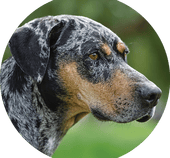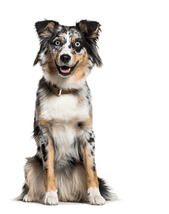Virtual Library | OFA Eye Certification Registry Exams
We are proud to provide Orthopedic Foundation for Animals (OFA) Eye Certification Registry examinations. These examinations, which can be performed only by qualified board-certified veterinary ophthalmologists, can determine potential heritable eye diseases in dogs before they are passed on to future generations. Read up on the benefits of OFA exams to veterinarians, breeders and prospective owners.
← Flip through our digital brochure
Please call us at 757-749-4838, if you are a breeder or a health-conscious pet owner and would like to schedule an OFA Eye Certification Registry consultation or appointment.
Animal Vision Center of Virginia is proud to provide Orthopedic Foundation for Animals (OFA) Eye Certification Registry examinations. These examinations, which can be performed only by qualified board-certified veterinary ophthalmologists, can determine potential heritable eye diseases in dogs before they are passed on to future generations. As a result, these exams help to limit the amount of genetic eye disease in dogs and produce healthier canine pets.
So, You Brought Home a Bulldog
Cataracts and Cataract Surgery
Entropion Causes and Treatment
Feline Herpesvirus and Treatment
OFA Certification Registry Exams
Visit our blog, In Focus, to learn more about the pets we see, the treatments we offer and the services we provide to help your pet “see a better life.”





